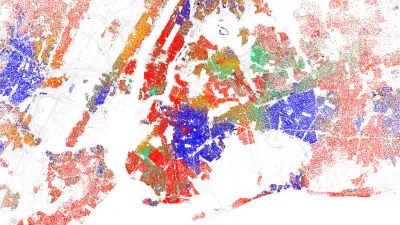The New York Times mines historic footage and current research for perspective on the effects of housing segregation.

A New York Times “Retro Report” examines segregation and public housing in 1960s United States in a piece titled “Where Does the American Dream Live?”
For the uninitiated, the Retro Report format mixes historic video footage with interviews from contemporary leaders and thinkers. In this case, Walter Cronkite introduces footage racial conflict while Henry Cisneros offer perspective.
Also, the report includes historic footage of Alex Polikoff, an ACLU lawyer who filed one of the first housing discrimination lawsuits, and contemporary footage of Polikoff looking back from the present day.
“Where Does the American Dream Live?” begins with the civil rights movement of the 1960s, explaining how events like the death of Martin Luther King, Jr. paved the way for the Gautreaux Project and the later Moving to Opportunity initiative. The recent unrest in cities like Ferguson, Baltimore, and Milwaukee is then tied to ongoing challenge of desegregating residential neighborhoods and the persistent difficulty of finding the answer posed by the question posed in the title of the report.
FULL STORY: Where Does the American Dream Live?

Planetizen Federal Action Tracker
A weekly monitor of how Trump’s orders and actions are impacting planners and planning in America.

Congressman Proposes Bill to Rename DC Metro “Trump Train”
The Make Autorail Great Again Act would withhold federal funding to the system until the Washington Metropolitan Area Transit Authority (WMATA), rebrands as the Washington Metropolitan Authority for Greater Access (WMAGA).

The Simple Legislative Tool Transforming Vacant Downtowns
In California, Michigan and Georgia, an easy win is bringing dollars — and delight — back to city centers.

Supporting Cycling Takes More Than Just Bike Lanes
Safe, protected bike lanes are a key part of a city’s bike infrastructure — but secure parking, e-bike charging, and other amenities can also influence people’s shift to cycling.

Judge Blocks Anti-DEI Rules for Transportation, Housing Grants
A second injunction blocks the Trump administration from enforcing new regulations for federal funding.

Unhoused People in San Jose Could Face Arrest if They Refuse Shelter
A policy proposed by the city’s mayor would give law enforcement the option to arrest homeless residents if they refuse three offers of housing.
Urban Design for Planners 1: Software Tools
This six-course series explores essential urban design concepts using open source software and equips planners with the tools they need to participate fully in the urban design process.
Planning for Universal Design
Learn the tools for implementing Universal Design in planning regulations.
Smith Gee Studio
City of Charlotte
City of Camden Redevelopment Agency
City of Astoria
Transportation Research & Education Center (TREC) at Portland State University
US High Speed Rail Association
City of Camden Redevelopment Agency
Municipality of Princeton (NJ)




























